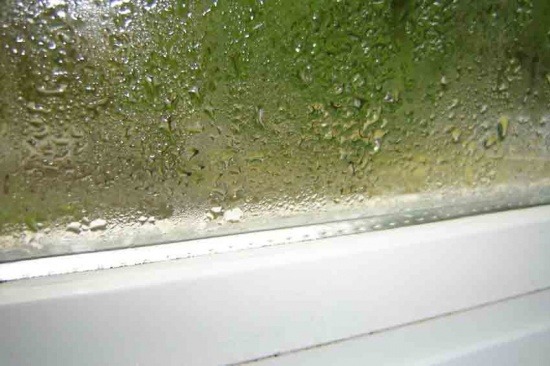MENU



If you have begun to notice condensation on your windows, you might figure that it’s time for replacement windows. However, replacing your home’s windows may or may not actually get rid of condensation. It all depends on where the condensation is located. New windows should not develop condensation between the glass panes like old, leaky windows often do, but interior and exterior condensation may still appear. Here’s a closer look at the relationship between replacement windows and condensation in your Indianapolis home.
Condensation Between the Window Glass
When you notice condensation on your windows, attempt to wipe it away. It if does not wipe away, it is located between the two panes of glass that comprise your dual-pane windows. This type of condensation only appears in windows that are old and leaky. Humid air leaks in between the deteriorating window sash and the loose gas. Then, when temperatures drop, moisture condenses out of that air. The condensation left behind can linger indefinitely since there’s not a lot of air circulation between the window panes.
Replacement windows will get rid of condensation between the window glass. New windows are better sealed, so no air will leak through between the window sashes and glass. Just make sure you steer clear of vinyl replacement windows. Vinyl may look nice when it is new, but it cracks and splits in response to temperature changes, soon leading to leaky, inefficient windows once again. A far better choice is Fibrex® composite from Renewal by Andersen. It does not react to temperature changes and stays tightly sealed to the glass, so you don’t have to worry about air leaks and condensation between the glass.
Condensation Inside Your Indianapolis Home
If the condensation is on the interior surface of your windows, this does not mean there’s anything wrong with your windows or that they need to be replaced. In fact, interior condensation can appear even on the newest, most efficient windows, and it is often just a sign that your home is too humid. Take steps to lower your home humidity, such as the following.
Condensation Outside Your Indianapolis Home
Condensation on the outside surface of the windows does not indicate a problem, either. New, efficient windows are actually more likely to develop exterior condensation since they stay cooler even when it’s hot and humid outside. Any condensation that appears on the outside of windows will soon dry up as air blows past. If the condensation really bothers you, try moving plants away from the moist windows. This will increase airflow so the windows dry off sooner. Exterior condensation may also be less obvious when you clean your windows more often. When the windows are clean, any water on them remains clear rather than taking on a dingy, dirty look.
If your windows are accumulating moisture between the glass, it is probably time to replace them. However, interior and exterior condensation can appear on any window and are more a factor of the environment than of the windows themselves. To learn more about replacement windows for your Indianapolis home, contact Renewal by Andersen. We offer free, in-home consultations and our estimates are good for one year.